7 Easy Ways to Detect a Water Leak and Fix It
- Zack Woo
- Mar 20
- 14 min read

Detecting and fixing water leaks promptly can save you from extensive damage and costly repairs.
Here are seven easy methods to identify and address water leaks, particularly focusing on ceiling leaks, HDB ceiling leaks, and ceiling leakage in both upper and lower floors.
First, look for visible signs such as discolored patches on walls or ceilings. Second, check your water meter for any unusual spikes in usage.
Third, inspect your home, especially bathrooms and kitchens, for any dripping sounds or puddles of water. Fourth, use water detection devices in areas prone to leaks.
Fifth, monitor your water bill for unexplained increases. Sixth, listen for the sound of running water when no fixtures are in use.
Lastly, use a moisture meter to detect hidden leaks in walls and floors.
By employing these techniques, you can effectively manage ceiling leaks and protect your home from further damage.
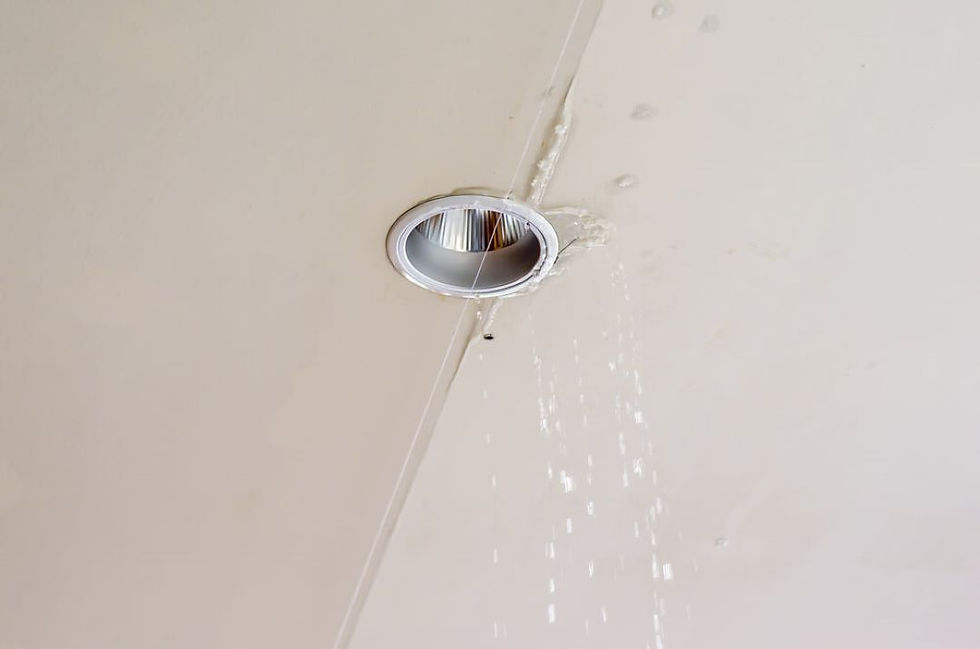
Detecting and fixing water leaks is crucial to maintaining your home's structural integrity. Simple techniques such as examining your concrete floor slab for damp patches or mould can indicate a leakage.
Checking the ceiling, particularly in areas directly beneath bathrooms or kitchens, can reveal water damage that might require ceiling repairs.
Flat owners, especially those on the topmost floor or sharing an upper and lower floor configuration, should regularly inspect their waterproof membrane for signs of wear and tear.
If a leak originates from your flat, it's essential to inform the lower floor flat owners promptly to prevent further damage.
For HDB flats, water leaks often require jointly arranged efforts for repair, such as the lower floor flat owners and the affected flat owner jointly engaging in the repair process.
HDB ceiling leaks are also a common issue that might be eligible for HDB's goodwill repair assistance, helping to reduce the repair cost burden.
Consulting the Strata Titles Board can also be beneficial when dealing with disputes or negotiating repair responsibilities.
Ensuring timely attention to leaks can help manage repair costs and uphold the property's value and safety.

How to find a water leak inside a wall?
To find a water leak inside a wall, you should start by investigating visible signs such as damp spots, mold growth, or peeling paint, especially around the floor slab and concrete floor slab areas.
It's crucial for flat owners, particularly in an HDB setting, to consider the potential impact on both the upper and lower floor flat owners.
The repair cost can be significant, as the leak might compromise the waterproof membrane, leading to ceiling repairs and issues with the structural integrity of the building.
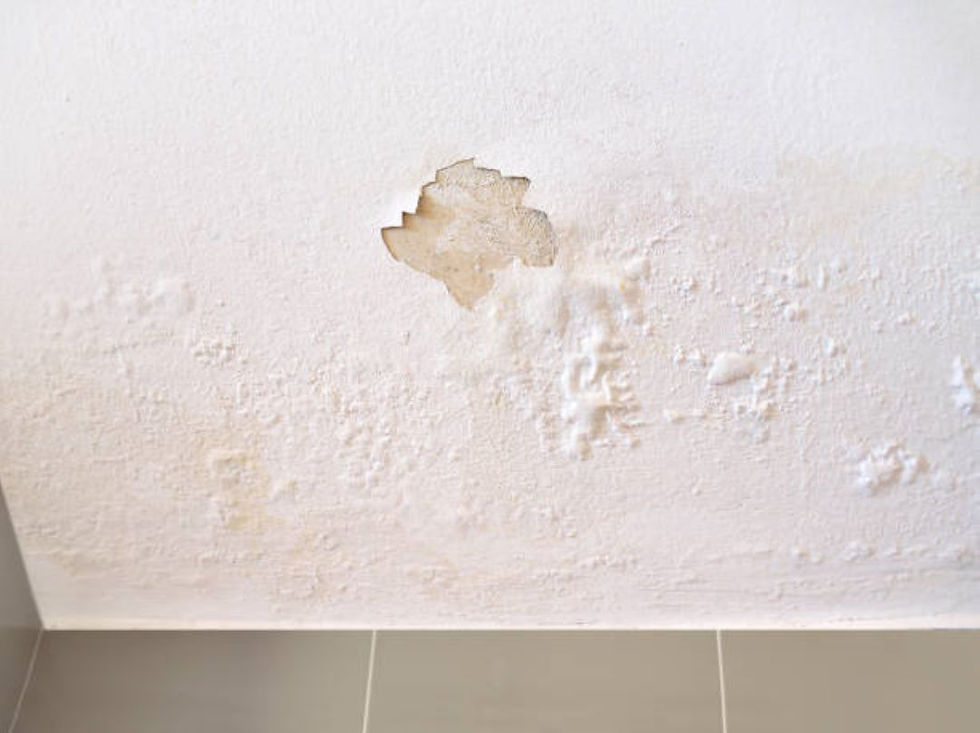
If the leak originates from a common area, such as a topmost floor or affecting multiple units, it is advisable to jointly engage the strata titles board or jointly arrange for an inspection to determine the source and extent of the damage.
HDB's goodwill repair assistance may be available under certain circumstances to help mitigate the repair costs.
Prompt action is essential to prevent further damage and ensure the safety and comfort of all affected flat owner and tenants.
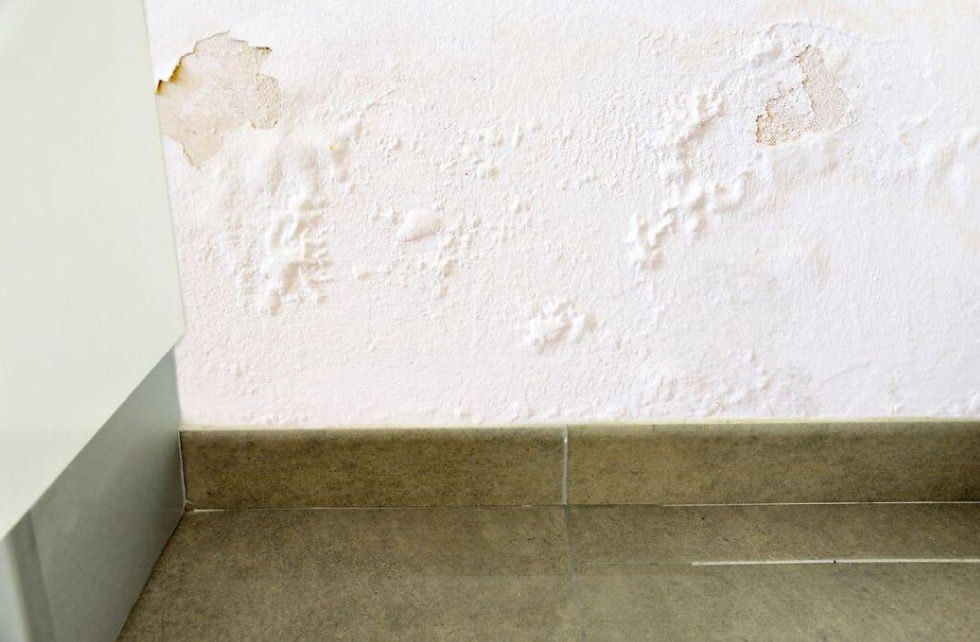
How to find a leak in wall or ceiling?
To find a leak in wall or ceiling, look for signs such as water stains, bubbling paint, or peeling wallpaper.
A ceiling leak can create noticeable water spots or sagging areas, while floor slab issues might present as damp or musty odors. Identifying the source early can prevent extensive damage and costly repairs.
Ceiling leaks can affect not only the aesthetics of your home but also its structural integrity. Floor slab problems often lead to uneven floors or cracked tiles, signaling deeper issues.
Repair costs can vary significantly based on the extent of the damage; flat owners should be prepared for potential expenses, especially if lower floor flat owners report water intrusion.
A leaking pipe inside the wall requires professional assessment to determine the exact location and cause.
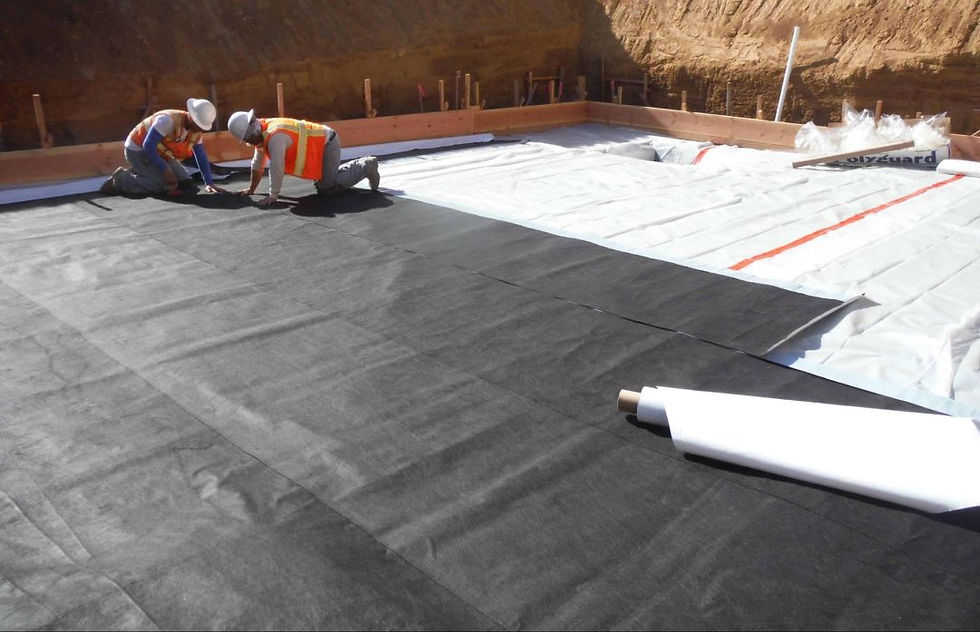
Concrete floor slabs may need significant work to restore, including replacing the waterproof membrane to prevent future leaks.
In some cases, if the ceiling leak originates from a common area or results from poor construction, the full cost for HDB ceiling leak repairs may be covered by the HDB's goodwill repair assistance, preserving both safety and property value.
Maintaining the structural integrity of your building is essential for preventing ongoing issues and reducing repair cost for lower floor residents.
For those living in strata-title properties, the Strata Titles Board may need to intervene to resolve disputes between upper and lower floor owners efficiently.
Ceiling repairs are best handled promptly to avoid widespread damage. By addressing these issues, you ensure a safe, comfortable living space for all floor levels.
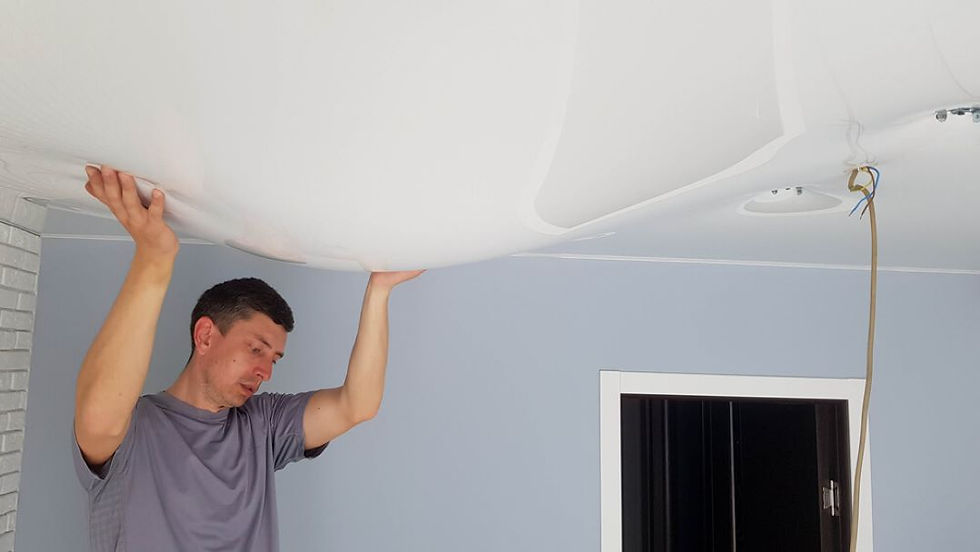
How to find where a leak is coming from?: HDB Ceiling Leaks
To find where a leak is coming from in the ceiling, especially in HDB flats, you should first check for any visible signs of moisture or stains on the ceiling.
Often, in upper-floor flats, HDB ceiling leaks can originate from the roof or from the neighbour upstairs.
Residents of HDB flats should remember that the town council is usually responsible for repairing common property, such as the roof.
To confirm the source of the leak, engage a licensed contractor who specializes in leak detection and building maintenance.
Finding a water leak inside a wall from rain may require inspecting for damp spots, peeling paint, or warped wall sections.

Water can seep in through cracks in the exterior walls or from the roof if the waterproof membrane is damaged.
The flat owner should pay particular attention to concrete walls, as rainwater can penetrate and cause leaks inside. If detected, flat owners should contact their town council for appropriate repair works.
To tell if you have a water leak underground, observe your water meter readings closely. If they continue to change despite all water outlets being turned off, it might indicate a subterranean leak.
In such cases, specially equipped licensed plumbers can carry out leak detection procedures.

These can often be within the lines running between your house and the meter, where professional maintenance work may be required.
When trying to find a water leak between your house and the meter, it’s crucial to check for wet spots in your yard or an unexplained increase in your water bill.
Sometimes, leaks can occur in the concrete slab foundation. To address this effectively, flat owners of lower floor flats might need to engage a contractor who can jointly provide a comprehensive inspection. If there is persistent disagreement over the source and responsibility for the leaks, flat owners may have to initiate legal action to resolve it.
Ensuring your HDB flat remains leak-free requires vigilance and proactive maintenance, engaging grassroots advisers if necessary, and having a good understanding of your responsibilities and those of the town council.
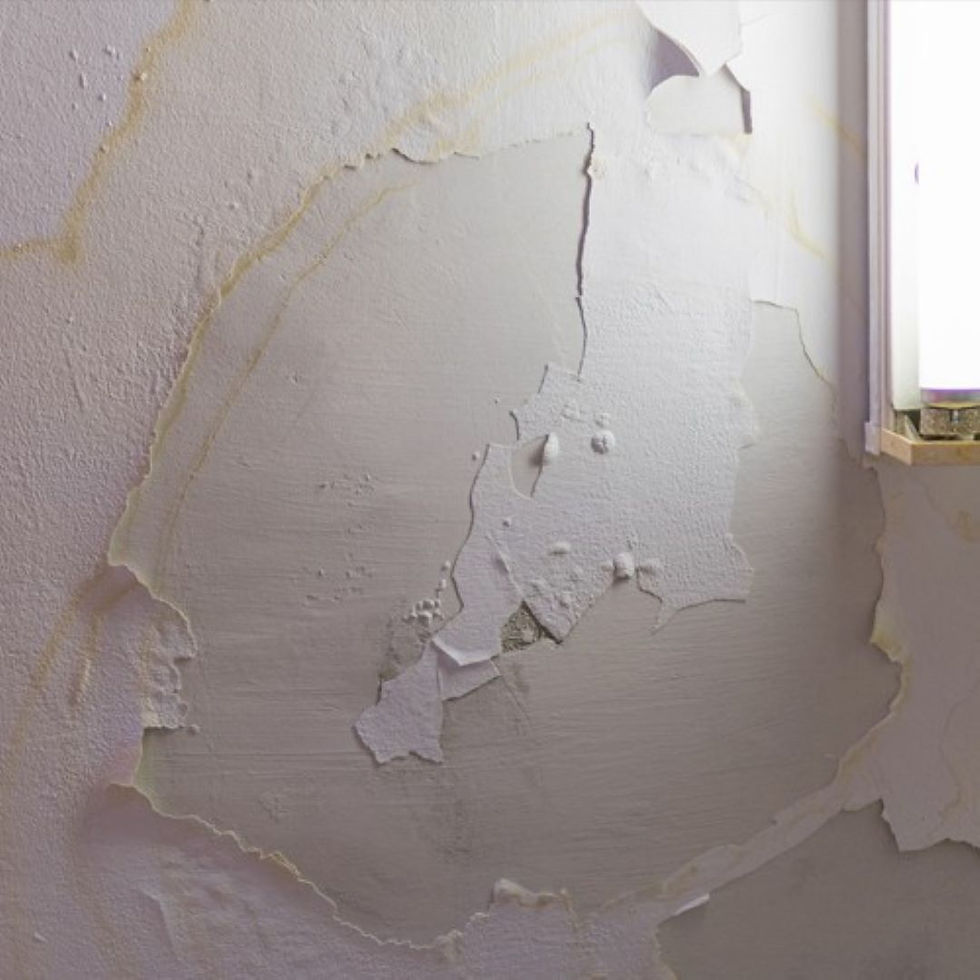
Why is water seeping through wall when it rains?
When it rains, water is seeping through the wall because the waterproofing membrane has either degraded or was improperly installed.
To address this, HDB flat owners, especially those in upper-floor flats, should begin by contacting a licensed contractor with expertise in concrete repairs.
The contractor will conduct an initial leak detection, identifying the precise source of the water ingress.
Often, leaks are discovered due to common property issues or party structure problems that implicate the upper and lower floor(s).
Once identified, the HDB flat owner can jointly engage with neighbours upstairs or consult with the town council to share the cost of required repair works.
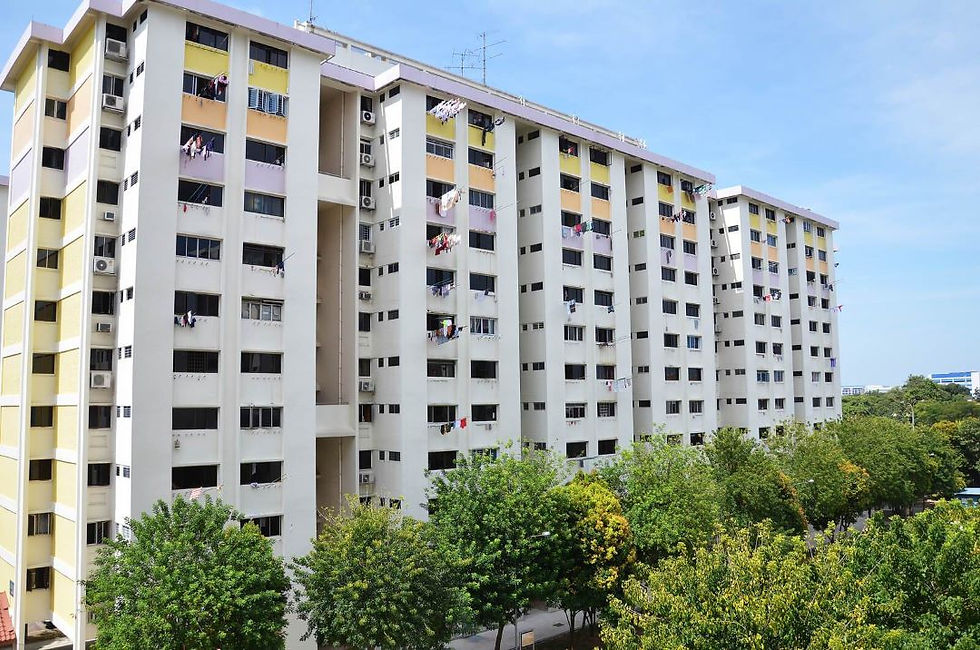
For leaks attributed to the roof or external walls, it is essential to ensure the common property is thoroughly maintained.
This may involve applying a new waterproof membrane or performing substantial concrete repairs to the affected areas.
If disputes arise regarding the responsibility and cost distribution, flat owners can seek mediation through grassroots advisers or, in extreme cases, initiate legal action to resolve the matter.
Promptly engaging licensed plumbers or maintenance contractors ensures that the leaks are efficiently repaired, safeguarding the integrity of the HDB flat and preventing further water damage to lower floor flats.
Making these repairs urgently not only addresses the current water seepage but also prevents future leaks and maintains property value.

How to fix a leaking wall from rain water?
To fix a leaking wall from rain water, first understand the cause by thoroughly inspecting both the exterior and interior walls.
Rain water often seeps through cracks or gaps in the outer concrete, particularly in the case of HDB flats, where common property maintenance is crucial.
Engaging a qualified contractor is essential for proper repairs. If the ceiling leak originates from roofing issues or the upper flat's contribution to shared walls, coordination with your neighbour upstairs or the town council may be necessary.
Key repairs typically involve sealing cracks with appropriate fillers and applying a waterproofing membrane to the affected areas.
For more extensive issues, such as leaks resulting from damaged structural components, a professional contractor who can handle concrete repair and waterproofing should be jointly engaged to ensure thorough and cost-effective repairs.
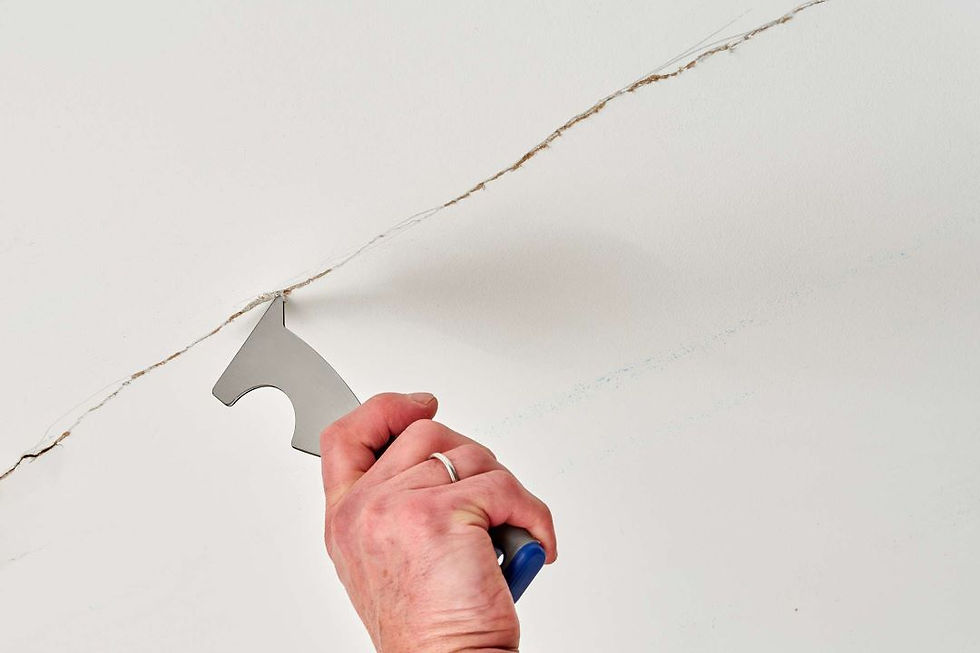
In lower floor flats, inspection for leaks through the floor slab is vital. This often requires collaboration with the owner of the lower flat and potentially the neighbour directly above to ensure all contributing factors are addressed.
For more persistent or severe issues, such as undefined water ingress despite no visible leaks, leak detection technology may be needed to pinpoint the exact source.
HDB flat owners should also be aware that town councils can assist in arranging and overseeing repair works, as common property maintained by the town council might also be responsible.
If disputes arise over cost or responsibility, initiating legal action could be considered, though it is advisable as a last resort.
Regular maintenance and prompt attention to leaks can prevent further damage and inconvenience.
Keep in mind that all HDB flat owners share responsibility in maintaining the party structure to ensure a safe and comfortable living environment.

Can plumbers detect leaks behind walls?
Yes, plumbers can detect leaks behind walls using various advanced tools and techniques.
Detecting water leaks, whether underground, behind drywall, or within HDB flats, often involves tools like acoustic listening devices, video inspection equipment, and moisture meters.
For instance, specialized acoustic equipment allows plumbers to hear the faint sounds of water escaping from pipes within concrete walls.
Video inspection using waterproof cameras helps pinpoint the exact location of the leaks behind drywall, saving HDB flat owners from unnecessary damage to their property.
Moisture meters are crucial in identifying areas of high moisture, indicating potential leaks.
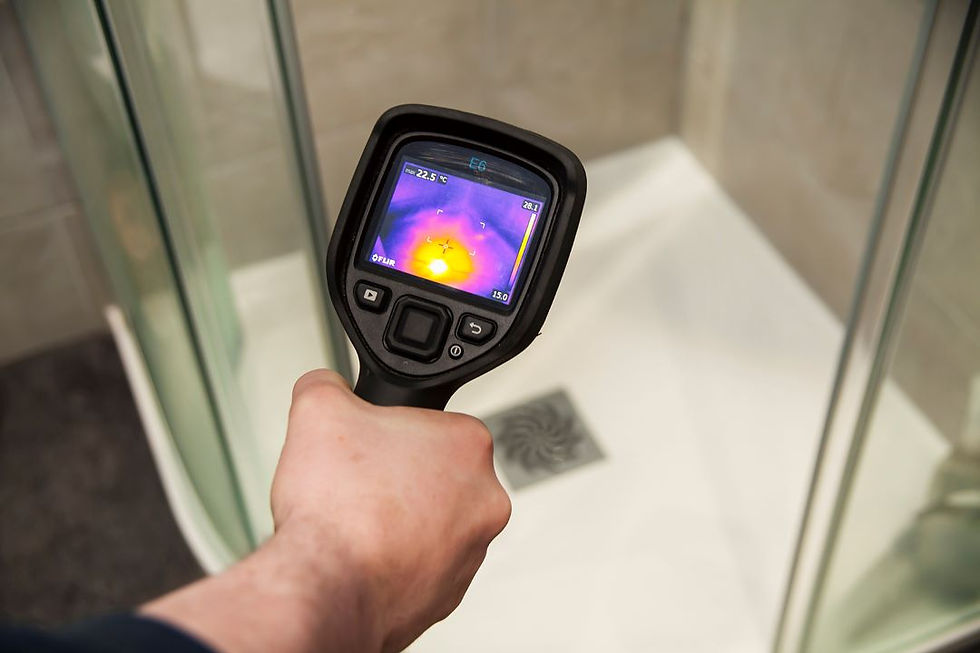
For underground leaks, methods such as soil probes, thermal imaging, and ground microphones are utilized.
These tools help detect leaks that might be affecting the common property maintained by the town council or might be a point of dispute between neighbours upstairs and those living in the lower flat.
Flat owners facing persistent leaks may need to jointly engage a contractor to manage and repair the issue.
The repair cost associated with these repairs are often a shared responsibility, part of the overall maintenance of party structures, roofs, and common property within an HDB.
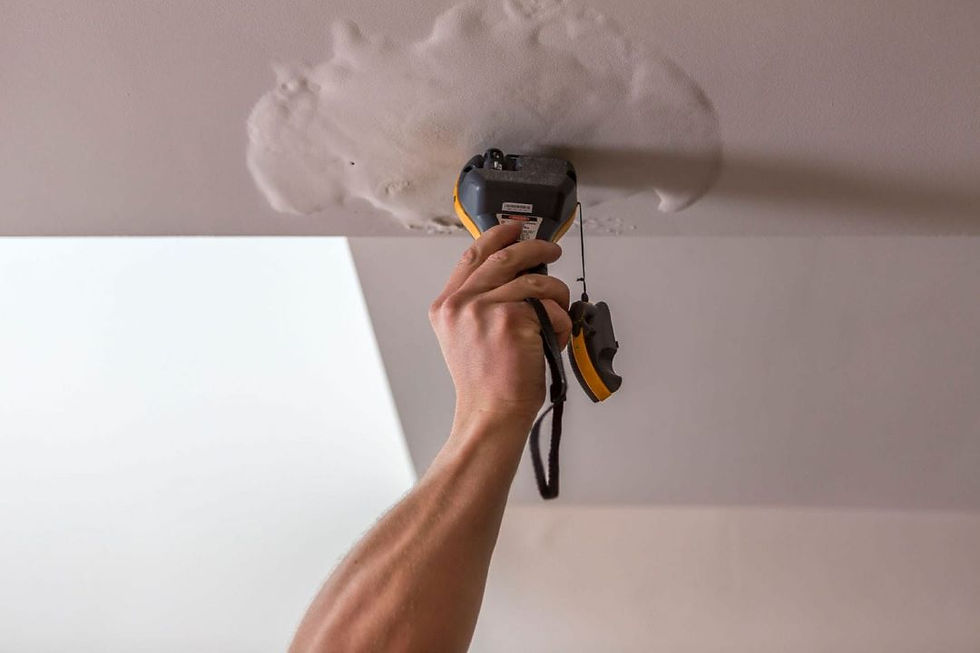
Early detection is crucial to prevent extensive damage and is part of regular maintenance, potentially saving flat owners from initiating legal action over unresolved leaks.
Upper and lower floor flats might experience leaks from common areas such as the roof or party structures, which can affect coordination and cost-sharing for repairs.
Prompt involvement of professional plumbers, alongside the town council, ensures that leaks are effectively managed, repaired, and maintained, safeguarding the property and financial interests of all parties involved in an HDB flat.

How to detect water leaks using wall water leakage detector?
To detect water leaks using wall water leakage detectors, you first need to understand the common causes of water leaks in buildings.
HDB ceiling leaks are a common problem due to various factors such as faulty waterproofing, poor maintenance of upper floor units, and even external factors like heavy rain.
Water leakage detection services can be hired to inspect and identify the source of these leaks. They may use tools like thermal scanners for water leakage or underground water leak detectors to accurately pinpoint the location of the leak.
For residential properties, there are also smart water leak detectors available that can be installed by homeowners themselves.
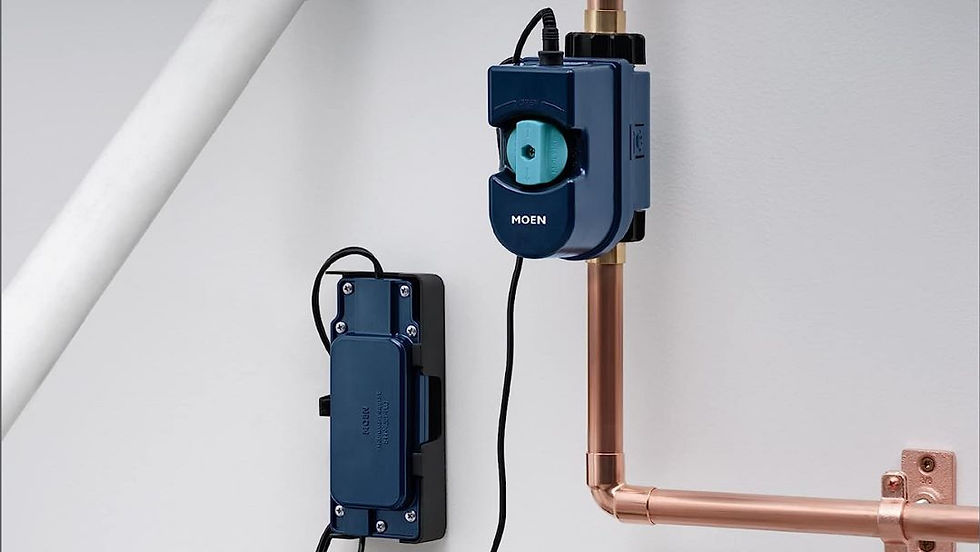
These smart water leak detectors alert you if there is a sudden increase in your water usage or if there is a constant flow of water even when all faucets are turned off.
In cases where it is not possible to detect the leak from within the unit, such as in concrete walls, a water leak detector that can be mounted on exterior walls can be used.
This type of detector works by detecting changes in temperature and moisture levels to identify areas with potential leaks.
Homeowners and property managers can leverage various technologies and services to precisely locate and address the source of leaks.
Water leakage detection services, often provided by professional contractors, utilise advanced tools like thermal scanners to identify leaks hidden behind concrete structures or within walls.
These thermal scanners efficiently pinpoint temperature variations caused by moisture, aiding in the detection of water leaks in residential and HDB flats.

For underground water leak detection, specialized underground water leak detectors are employed, which can detect moisture accumulation and leaks below the surface.
In addition, smart water leak detectors offer a modern solution by integrating with home maintenance systems and alerting flat owners of possible leaks in real time.
Products such as those available at Screwfix provide reliable options for homeowners seeking to manage and maintain upper and lower flat structures.
Ensuring proper leak detection is vital for maintaining common property and avoiding further damage, which can be costly to repair.
In HDB flats, detecting leaks early, especially from common structures like roofs or pipes connecting to neighbour upstairs or lower floor, can prevent structural damage and disruptions.
By jointly engaging with town councils for maintenance, HDB flat owners can collaborate to ensure that leaks are promptly repaired, maintaining the integrity of both party structures and the overall HDB property.
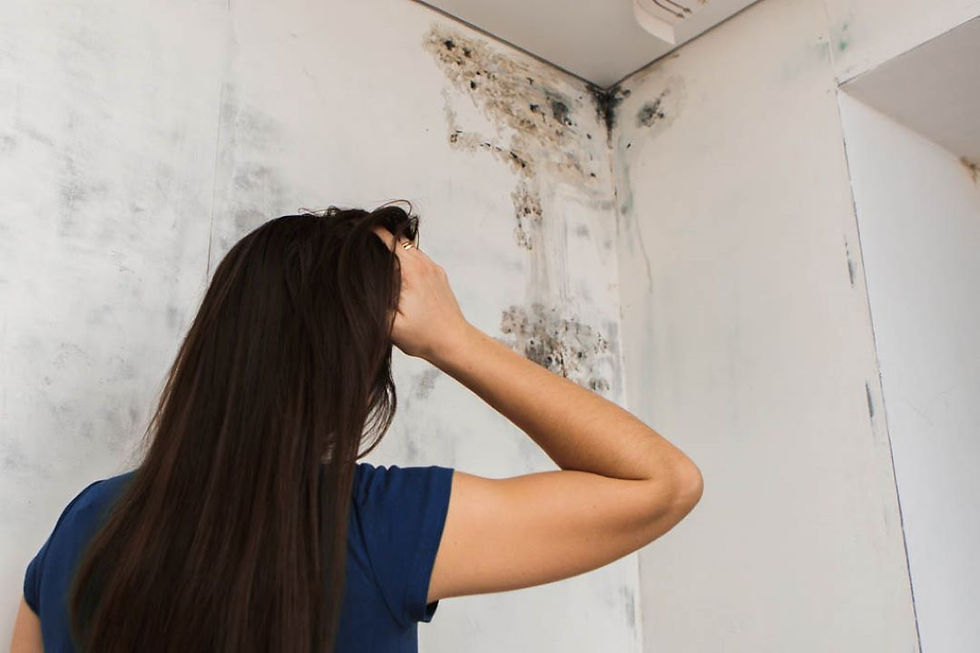
Who to call for water leak in wall?: HDB Ceiling Leaks
When there is a water leak in wall, call the HDB maintenance unit at 1800-463-4948 immediately to report the issue.
Water leaking from the ceiling in HDB flats typically occurs due to wear and tear in the upper floors, often caused by damaged concrete or faulty plumbing.
To report water leakage, you need to contact the HDB branch office in charge of your block. You can lodge a HDB water leakage complaint by calling their hotline or filling out an online service request form.
Note that, flat owners are responsible for the upkeep and maintenance of your respective flats, including the floor and ceiling slabs. If these slabs need to be repaired to resolve the leak, you and your neighbours will have to arrange for the repair work and split the cost.

If the leak is caused by the renovations done by the upper-floor resident or from an upstairs flat, then the upper-floor resident would be liable for the full cost.
It’s essential to jointly engage a contractor to assess and fix the damage. Both parties can arrange for the repair works, as repair cost for common property like ceilings are often shared.
If disputes arise or you are facing uncooperative neighbours upstairs, you may need to bring the matter before the Building Maintenance Strata Titles Board.

The cost for HDB ceiling leak repair varies, depending on the severity of the damage and the extent of the repair work required. Typically, a ceiling leak repair cost ranges from SGD 300 to SGD 800.
To help flat owners resolve ceiling leaks arising from natural wear and tear over time, and keep the repair cost affordable for both flat owners, HDB offers assistance through the HDB's Goodwill Repair Assistance (GRA) scheme.
Repairing leaks may involve addressing wet areas and void deck issues, which could increase the costs involved.
HDB flat owners can initiate legal action if necessary, although it’s usually best to try and resolve the issue amicably.
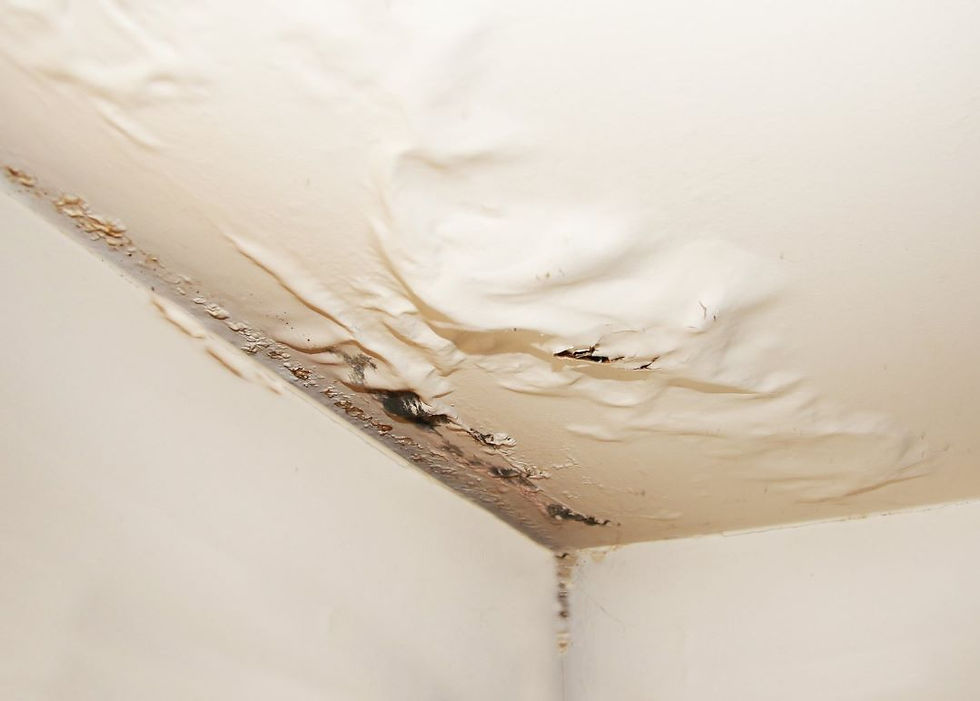
What is the repair cost for water leak in wall?
The repair cost for water leak in wall is S$200 to S$1,000, depending on various factors such as the extent of the damage, the location of the leak, and whether the issue is a simple fix or requires extensive work.
Leaks caused by wear and tear in HDB flats are common, particularly when heavy rain seeps through walls or ceilings.
If the water leakage originates from the neighbor upstairs, resolving the issue may involve collaboration to address the root cause.
For water seeping through the wall during rain, repair costs can vary based on the necessary maintenance, materials, and equipment used.
Filing an HDB water leakage complaint may lead to shared responsibility under programs like the Goodwill Repair Assistance (GRA) scheme, which can help reduce the full cost of repair.
For ceiling leaks caused by damaged pipes, repair costs might increase, with prices escalating further if the block's structural integrity requires additional attention.

How to find hidden water leaks?
To find hidden water leaks, particularly in HDB flats, it’s crucial to look for signs of dampness or stains on walls, ceilings, and floors, especially in wet areas and common properties.
If you suspect a leak, it might be necessary to tear into surfaces such as concrete to locate the source.
Engaging a contractor for leak detection and repairs is essential, especially when dealing with complex issues like ceiling leakage.
The flat owner of the lower floor may be impacted and should jointly arrange with upper flat owners and potentially uncooperative neighbours to resolve the issue.
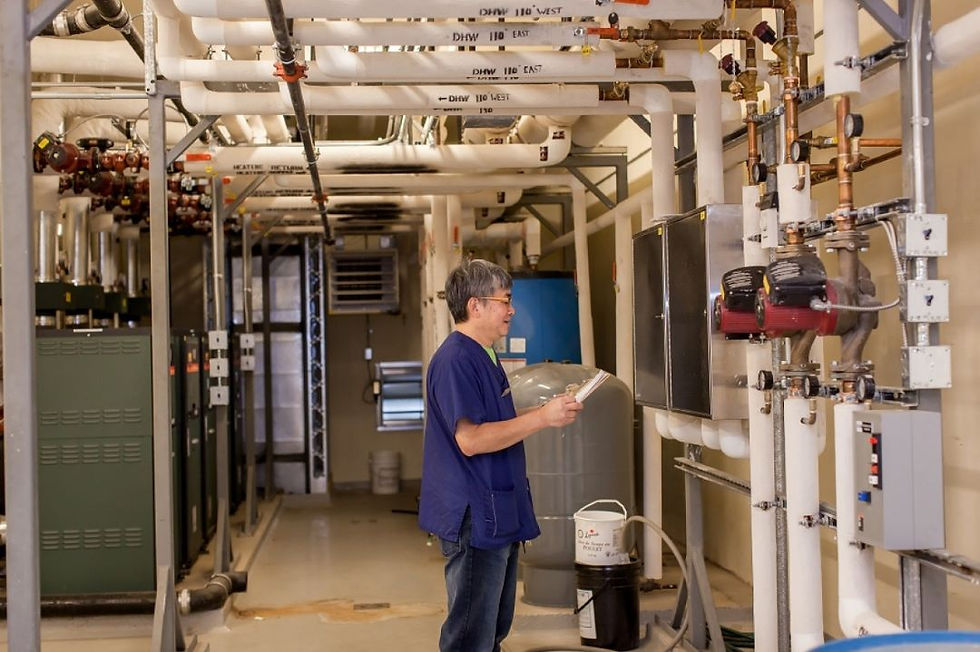
If the situation arises from common property maintained by HDB, the respective maintenance block may need to be informed. Common property maintained by HDB related to water leaks includes drainage systems, water tanks, and roofs.
Should there be uncooperative neighbours, initiating legal action might be required, with support from grassroots advisers.
The repair costs can be shared, and legal means may be necessary if mutual agreement on repair efforts isn't reached. Ultimately, timely repairs can prevent further damage and legal complications arising from unresolved water leaks.
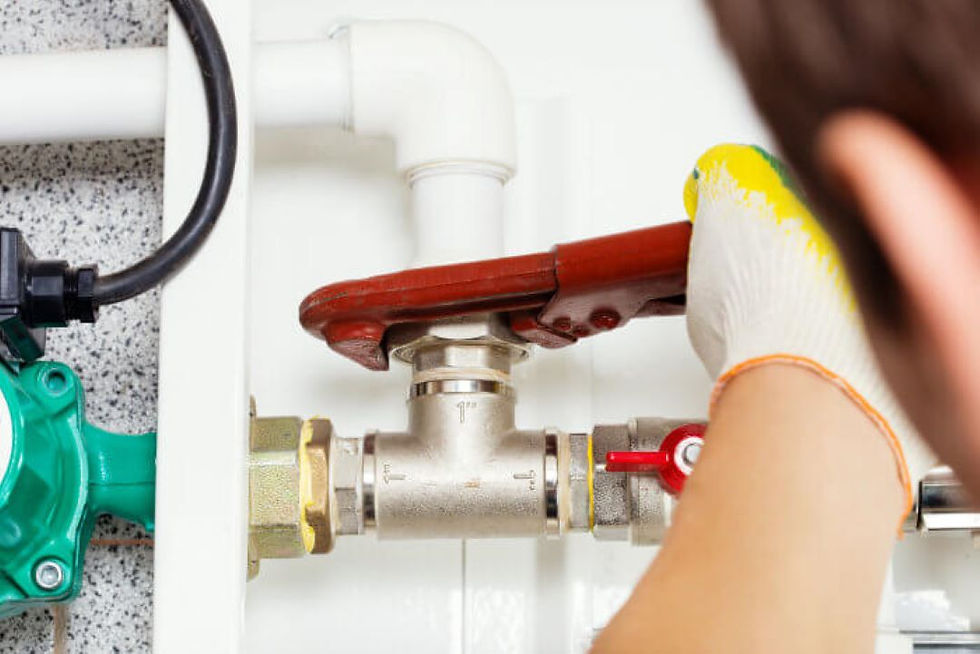
How do I find out where my water is leaking from?
You find out where your water is leaking from by carefully inspecting your ceiling, floor slab, and walls for any signs of damage or water stains.
Ceiling leaks can signify issues with pipes, particularly in older buildings where wear and tear is common. Check out the 10 most common causes of leaky pipes here.
Repairs often involve addressing the leakage at the source, which requires the expertise of licensed plumbers or contractors such as Thong Nian Engineering.
In HDB flats, a ceiling leak typically occurs due to problems with the concrete floor slab, especially in bathrooms. To understand more, here is an easy guide on how to find a water leak in your house.

The lower floor flat owners may notice water seepage stemming from the upper levels, indicating that the neighbour upstairs might need to engage a contractor for repairs.
Working with grassroots leaders and advisers can also aid in the process of managing HDB ceiling leaks.
Structural integrity is paramount, as prolonged leakage can weaken the concrete and necessitate more extensive repairs.
In cases of dispute or complicated leaks, the involvement of a grassroots adviser or block management might be necessary to determine what counts as a plumbing emergency and to coordinate the repair efforts across different flats.
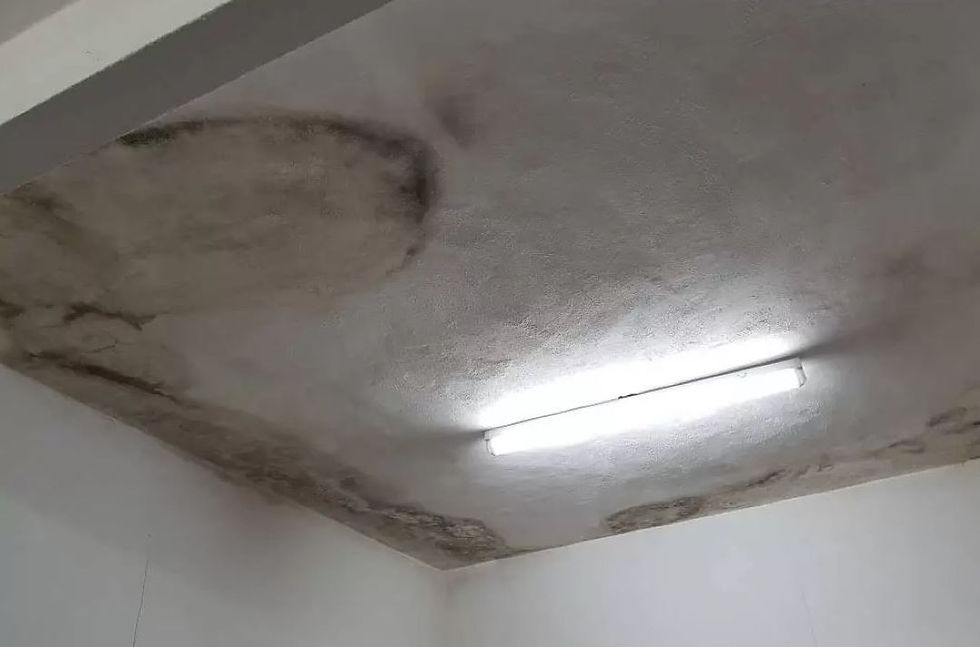
Where is the most common water leak in a house?: Floor Slab and Ceiling Leak
In a house, the most common water leak is often found either at the ceiling or the floor slab.
Ceiling leaks typically occur due to damaged or deteriorated roofing materials, faulty pipes running through the ceiling, or tears in the waterproofing layer.
These leaks can be particularly troublesome in older buildings where the materials have seen extensive wear and tear.
Similarly, concrete floor slab leaks are common in bathrooms and lower floor, where water can seep through cracks in the concrete or around pipes that penetrate the slab.
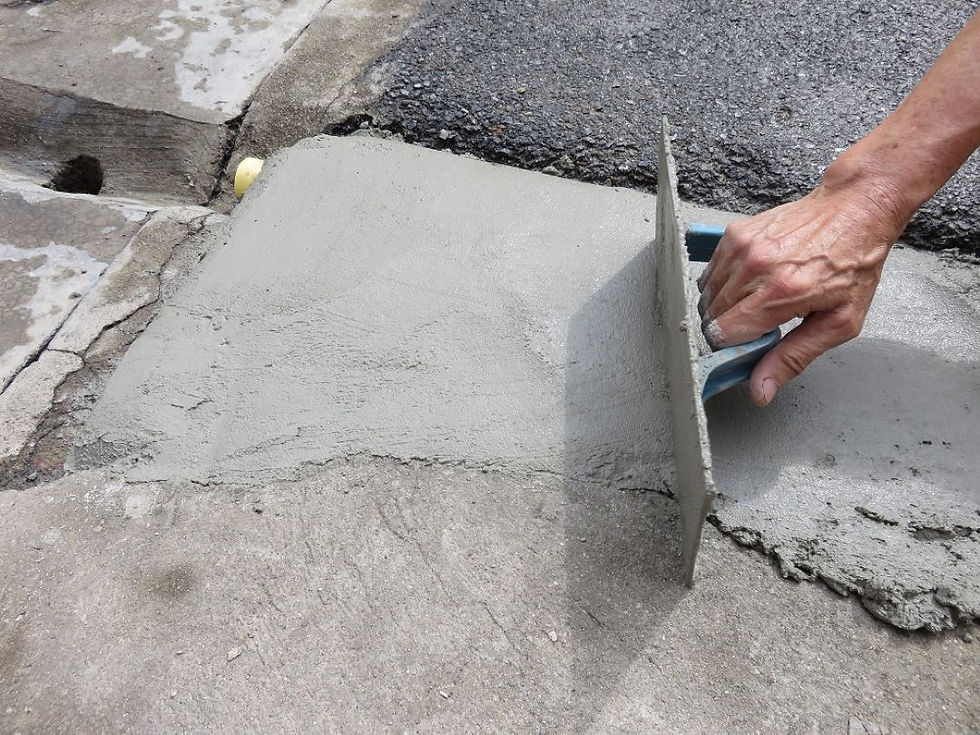
Repairs for these concrete floor slab and ceiling leak issues often necessitate the expertise of experienced contractors and grassroots leaders to ensure the problem is thoroughly addressed.
For instance, if you are a flat owner living in the topmost floor of a building, a ceiling leak might mean the roof needs repair, while in a lower flat, it could indicate a problem with the plumbing in the unit above.
In the case of water leakage in HDB flats, reporting the issue promptly and coordinating with the relevant authorities can help ensure swift and efficient repair work, preventing further damage.

Which technique is used to detect water leakage?
To detect water leakage, a thermal imaging technique is used. This method is particularly effective in areas like bathrooms where pipes are often hidden behind walls or beneath floors.
Over time, the concrete can develop minor tears or cracks, allowing water to seep through. When this occurs, the issue must be promptly repaired to prevent further damage.
In HDB block(s), such as those in Singapore, identifying and addressing leaks is a crucial aspect of residential maintenance. Not sure how often should you get your water pipes inspected? Read this easy article to gauge a better understanding.
Often, the responsibility for these repairs falls on both the homeowner and the HDB, requiring them to be jointly engaged in the process. Contractors are usually called in to assess and fix the leakage.
Grassroots advisers can also be involved, offering guidance on the repair works. Repair works must be completed quickly. Ignoring crucial repair works can be detrimental. These are the top 5 reasons you should fix leaky pipes, what are the impacts of water leaks & why you should not ignore them.
While some residents may attempt to handle minor fixes with their own hands, more significant issues, like roof leaks or water infiltration from an upper unit, often necessitate professional intervention to mitigate the cost and complexity.
Hiring a professional plumber or planning to DIY handle minor fixes on your own? Check out what are the tools and techniques for water leak detection.

Comments